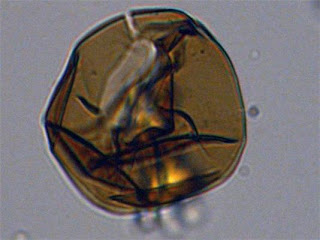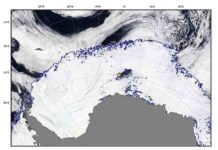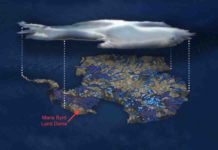
Seasonal primary productivity of plankton communities appeared with the first ice. This phenomenon, still active today, influences global food webs. These findings, reported in the journal Science, are based on fossil records in sediment cores at different depths.
The study was led by the Andalusian Institute of Earth Sciences, a Spanish National Research Council-University of Granada joint centre.
The Antarctic continental ice cap came into existence during the Oligocene epoch, some 33.6 million years ago, according to data from an international expedition led by the Andalusian Institute of Earth Sciences (IACT) — a Spanish National Research Council-University of Granada joint centre. These findings, based on information contained in ice sediments from different depths, have recently been published in the journal Science.
Before the ice covered Antarctica, Earth was a warm place with a tropical climate. In this region, plankton diversity was high until glaciation reduced the populations leaving only those capable of surviving in the new climate.
The Integrated Ocean Drilling Program international expedition has obtained this information from the paleoclimatic history preserved in sediment strata in the Antarctic depths. IACT researcher Carlota Escutia, who led the expedition, explains that “the fossil record of dinoflagellate cyst communities reflects the substantial reduction and specialization of these species that took place when the ice cap became established and, with it, marked seasonal ice-pack formation and melting began.”
The appearance of the Antarctic polar icecap marks the beginning of plankton communities that are still functioning today. This ice-cap is associated with the ice-pack, the frozen part that disappears and reappears as a function of seasonal climate changes.
The article reports that when the ice-pack melts as the Antarctic summer approaches, this marks the increase in primary productivity of endemic plankton communities. When it melts, the ice frees the nutrients it has accumulated and these are used by the plankton. Dr Escutia says “this phenomenon influences the dynamics of global primary productivity.”
Since ice first expanded across Antarctica and caused the dinoflagellate communities to specialize, these species have been undergoing constant change and evolution. However, the IACT researcher thinks “the great change came when the species simplified their form and found they were forced to adapt to the new climatic conditions.”
Pre-glaciation sediment contained highly varied dinoflagellate communities, with star-shaped morphologies. When the ice appeared 33.6 million years ago, this diversity was limited and their activity subjected to the new seasonal climate.
Note : The above story is reprinted from materials provided by University of Granada.









